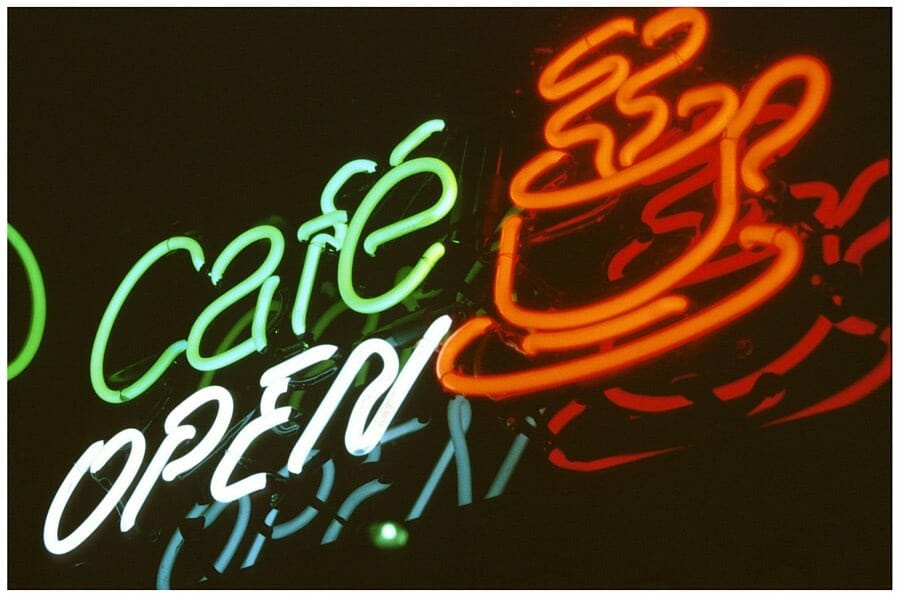Around the corner from our office sits a quaint little cafe. With daily deal specials and a wonderful salad bar with all the fixins’, business is steady. Despite the delicious food and soup, some days I pass right on by and head to another local eatery.
Why?
Because our quaint little shop operates solely on cash or check payments. While rare, it’s not completely unheard of to see a small shop run a cash business. But in an age of convenience and cards, cash rarely makes its way into my wallet or onto my To-Do list, and therefore dictates where I spend my lunch dollar.
And I know I’m not alone. In fact, one of our employees, Jordan (who happens to fall into the millennial category) never has cash either. Like, not ever.
So much so that last week our mailman dropped off a package for him. It turns out that he was tired of not being able to eat next door because he never has cash and decided to do something about it.
He ordered a credit card reader for the owner.
Now, whether said owner makes the jump into the card transaction world or not is a whole other issue. But I think it speaks volumes that our millennial friend went to the trouble of getting a credit card reader, but not to the trouble of visiting an ATM.
And it’s why I adore this new crop of adults.
Because he wanted to support the little mom-and-pop shop next door, but was unable to because his life does not incorporate cash, he took action and tried to bridge a gap between his commitment to local and his commitment to convenience.
And as marketers, we need to take note of that.
Commitment to local
- Loyalty. Gen Y is quickly proving themselves to be the most loyal customer base when compared to their fickle Gen X predecessors. Many are willing to concede price and frills for a genuine connection. For a generation raised on social media platforms, being able to talk about (and sometimes, talk to) their favorite places, brands, musicians is no longer such a far off notion, but one that is literally a click away. For this reason, it changes the marketing discussion from a push-the-message conversation to a back-and-forth one, resulting in higher levels of brand engagement, adoption and loyalty. And it should change they way marketers interact with this generation.
- Local. If there were a flag to wave for shopping, buying, and producing local, this generation would raise it proudly. With 60% of this group identifying themselves as entrepreneurs, it makes sense that their loyalties lie with “local” establishments. I use local loosely, because even Whole Foods, a national business, has a well-crafted marketing strategy aligning themselves on a community basis, winning the local card from this group. Because keeping dollars in the local economy is so important to him, Jordan went to the trouble of making a gift of convenience to our cafe around the corner. If a business is touting itself on the small business scale, there are valuable dollars to be garnered in the millennial market.
Commitment to convenience
- Mobile. It comes as no surprise that this group demands mobile everything: Banking, shopping, communicating. Rather than adjust to the parameters of the business, this group will demand the convenience in exchange for their loyalty. Whoever is the most convenient (and local) wins their loyalty. As technology grows and changes, it is essential for small businesses to pay attention to the trends in order to be players with this next generation.
- Problem solving. When faced with the conundrum of shopping local or shopping elsewhere, Jordan decided that local was important enough for him to go out of his way to make shopping local a possibility. Jordan is no longer torn between making the decision to shop local or not, now it’s up to the business owner to decide if he wants to concede to the use of a card reader and win Jordan’s business.
- Frictionless. Whether it be a cafe, a shoe store, or loan office, the less friction involved in a transaction, the better. A swipe, a click, or a digital message is all this generation wants when it comes to business transactions. The easier the interaction, the easier the conversion to customer applies.
At this point, millennials are still on the young side of adulthood. While it may not be in your marketing strategy to change the entire way you conduct business for this young generation, it is essential that changes to your marketing plan begin to incorporate bringing these loyal customers into your business.
Even if it is by plugging a card reader into your iPhone.


